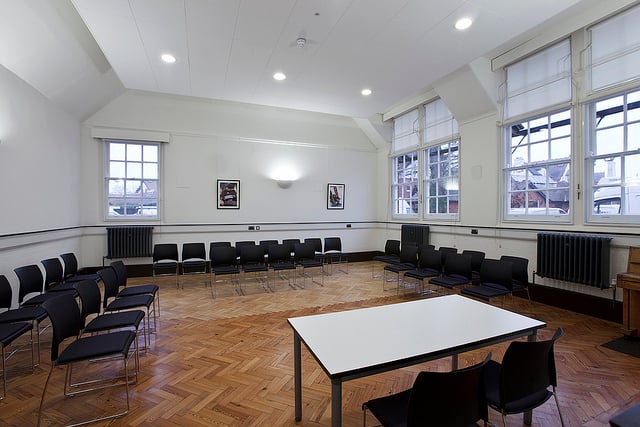
Photo: Zinc Arts via Creative Commons 2.0
Trading, tax and risk
What are the implications for arts organisations engaging in ‘non-primary purpose trading’, such as hiring out a room? Sean Egan gives an overview.
‘Non-primary purpose’ trading can take many forms – it may be hiring out excess space for corporate or community hire. Charitable arts organisations are not always fully aware of the best way to approach this sort of new activity or how to expand existing activity.
As a general rule, charities should not carry out non charitable activity. This does not mean they cannot trade and it is always worth checking whether there is a general power to trade in the constitution. Charity Commission guidance accepts that charities can carry out ‘primary purpose trading’, even if it is risky, and requires that non primary purpose trading should only be undertaken if it is not risky and the profits will not be taxable. You need to check therefore that any non-primary purpose trading does not involve significant risk, even if the profits are not taxable.
Where there is a café open not just to ticketholders but to members of the public, this will not be primary purpose trading
There is a common assumption that charities do not pay corporation tax. This is incorrect. Corporation tax will be payable unless the activities fall within specific exemptions. The main ones are primary purpose trading, small-scale trading, one off fundraising events, annual payments and rental payments. If the trading in question does not fall within one of these, you may find that you have a tax bill which could have been avoided. The nasty implication is that trustees could be personally liable for any tax payable if they should have taken steps to ensure it was not. There is also the potential for criticism by the Charity Commission and bad publicity.
The key concept is primary purpose trading, which is where the profits from trade are applied solely to the purpose of the charity and the trading is in fulfilment of the main charitable objects. So, a theatre company with educational objectives is able to sell its own tickets, undertake educational outreach activities and offer café services to ticketholders. If a café is open not just to ticketholders but to members of the public, this is not primary purpose trading but mixed trading, and different rules apply. Other examples of mixed trading is an arts centre selling arts-related books and other books, hiring space for events, outsourcing catering, licensing IP, producing films and running a café or bar in house. How each is treated will depend on the particulars in each case.
One helpful exemption is small-scale trading which, by concession, allows non primary purpose trading up to a sliding scale per year. If there is mixed trading you will need to identify which is ancillary trading and which is not. If it cannot be separated, then it will all count towards this figure. If the small-scale trading exemption is exceeded, then there may well be tax to pay.
Where charitable arts organisations have significant trading, particularly if it exceeds the small-scale trading exemption, it should consider setting up a trading subsidiary. The subsidiary shares will all be owned by the charity, the working capital typically provided by a loan from the charity, and its profits paid to the charity under Gift Aid. On this basis, the trading subsidiary will have no taxable profits.
Care needs to be exercised when setting up trading subsidiaries in order to ensure it has the right directors and there is no confusion between the subsidiary's activities and the charity's activities. The charity's trustees must agree to any loan or investment in the subsidiary and comply with the Charity Law requirements (see Charity Commission guidance CC35 – Trustees Trading and Tax). For instance, any loan should be at a commercial rate of interest and potentially secured with proper repayment terms. Other issues to consider are the extent to which the subsidiary is making use of the charity's staff, which therefore should be recharged to the subsidiary, and the use of the charity's name, logo and data.
So, in the right circumstances, the trading subsidiary is the dream ticket, but there is some extra administration and it does require clear understanding of the relevant tax issues. When looking at a subsidiary, you should also consider whether there is a potential threat to the charity's exemption for rate relief and whether undertaking some activities will affect some VAT recovery. For instance, if the charity is within the cultural services exemption, the subsidiary will not be, as it cannot be a ‘voluntary body’. Other VAT exemptions may not apply, such as the educational services exemption.
Sean Egan is Head of Arts and Media at Bates Wells Braithwaite.
www.bwbllp.com
[email protected]
Join the Discussion
You must be logged in to post a comment.